NIL
NCAA D-1 Tennis Player Files Explosive Objection to NIL Settlement Against Duke University, Citing Broken Promises and Retaliation
In a dramatic twist to the ongoing College Athlete NIL Litigation, Duke University tennis player Samuel Landau, an NCAA Division I Athlete, has filed a limited objection to the proposed House settlement, accusing the school of luring him with false promises of NIL payments and retaliating when he spoke out. $45K NIL Deal, Potential False […]

In a dramatic twist to the ongoing College Athlete NIL Litigation, Duke University tennis player Samuel Landau, an NCAA Division I Athlete, has filed a limited objection to the proposed House settlement, accusing the school of luring him with false promises of NIL payments and retaliating when he spoke out.
$45K NIL Deal, Potential False Rumors, and Anti-Semitic Accusations Surface in Filing
The objection, which was filed on Thursday in the U.S. District Court for the Northern District of California, Oakland division, claims that Duke Men’s Tennis Head Coach Ramsey Smith promised Landau $45,000 in NIL compensation in addition to his scholarship to secure his transfer to Duke in late 2023.
According to the objection, Coach Smith assured Landau and his family multiple times, including in an April 2024 text message to Landau’s mother, that the player would be “well taken care of.” However, once Landau joined the program, he alleges that the NIL money never came through.
The objection, filed by Landau’s attorney, Rodger Landau, paints a troubling picture of alleged misconduct within Duke’s athletic department. It accuses the university of retaliating after Landau raised concerns about the NIL payments. According to the filing,
Coach Smith allegedly spread false rumors that Landau had a drug problem, citing a false statement from University of Texas coach Bruce Berque, which has since been denied in writing by the Texas program.
The filing alleges that Duke officials wrongly suspected Landau, who is Jewish, of running a social media account that was critical of his own team members, invoking what the family describes as an anti-Semitic trope. Landau argues that the current language in the proposed settlement is too broad and could allow Power 5 schools to escape liability for NIL misconduct, including false inducements and broken promises.
He is urging the court to revise the settlement to include expanded audit rights and establish an arbitration process for student-athletes to seek compensation for unpaid NIL deals. He proposes allowing arbitrators to impose penalties of up to $5 million per athlete for proven fraud or retaliation.
If such revisions aren’t made, Landau is calling for Duke University to be excluded from the House Settlement altogether. He argues that Duke, with its $12 billion endowment, has demonstrated an unwillingness to honor NIL commitments and has weaponized its institutional power to suppress dissent.
The NIL era has meant that college athletes can now earn money from their name, image, and likeness through endorsements and sponsorships. Earlier, college athletes were not paid and did not gain monetary benefits from the revenue generated by prestigious college sports programs.
NIL
University of Missouri spent over $31M on NIL for athletes in 2024
The Univ. of Missouri athletic department has spent “more than” $31M on NIL compensation for its athletes during the past year, according to Eli Hoff of the ST. LOUIS POST-DISPATCH. The records show nearly “two-thirds of the money in 2024 went to football players” and “about a fourth to men’s basketball.” The remainder was “split […]
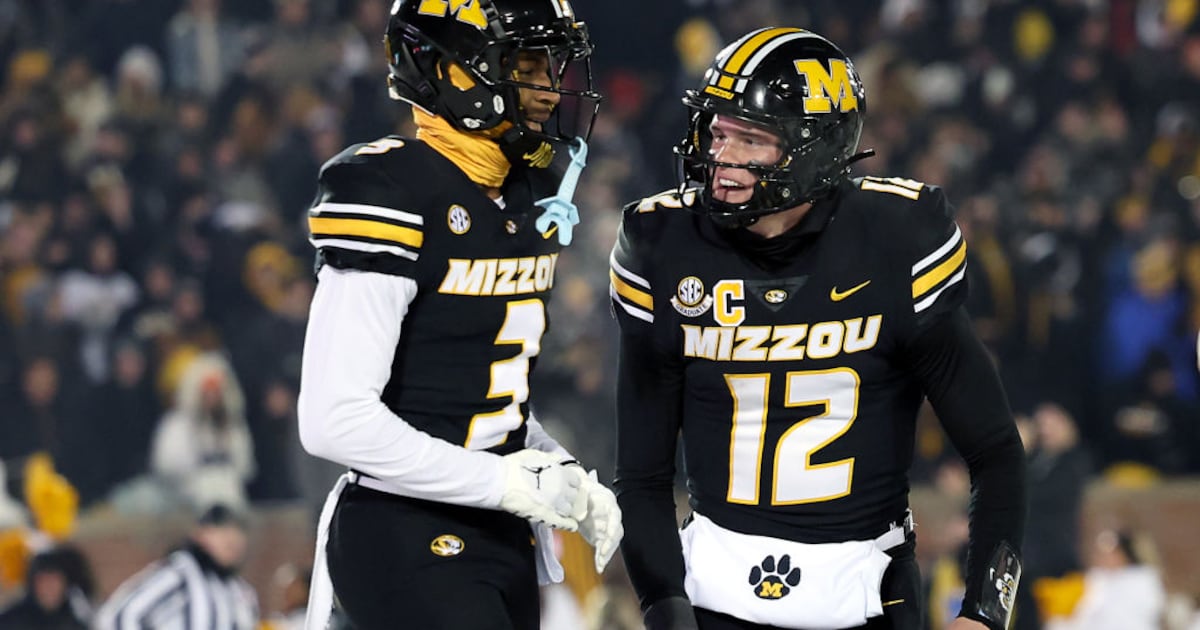
The Univ. of Missouri athletic department has spent “more than” $31M on NIL compensation for its athletes during the past year, according to Eli Hoff of the ST. LOUIS POST-DISPATCH. The records show nearly “two-thirds of the money in 2024 went to football players” and “about a fourth to men’s basketball.” The remainder was “split among baseball, women’s basketball and lower-profile programs.” Missouri AD Laird Veatch has “declined to specify how his department will share” $18M of revenue with athletes under the terms of the recent House settlement. But Mizzou’s NIL spending breakdown “provides a window into how it has distributed money to this point and how it may share revenue with athletes moving forward.” MU was billed “more than” $31.7M by Every True Tiger, the collective-turned-marketing agency that runs the school’s NIL operation, from July 1, 2024, to date, a span that “roughly aligns with both a sports and fiscal year.” The number of athletes receiving NIL benefits “varied month to month,” ranging from 155 to 65, with an average of 125. Every True Tiger is “not quite like the collectives” used to generate and distribute NIL funds at most schools. It is a self-described “marketing and branding agency” tethered to Mizzou, allowing the school to “funnel NIL money to its athletes.” The funds are listed in the invoices as “talent fees” (ST. LOUIS POST-DISPATCH, 6/18).
NIL
French Basketball President Accuses NCAA of ‘Looting’ With $2 Million NIL Deals Wreaking Havoc
French basketball faces its greatest crisis as $2 million NIL deals lure away top prospects, prompting League president Philippe Ausseur to accuse American colleges of systematic “looting.” These high figures represent a significant increase over what French officials expected, creating chaos across the continent’s development system. The financial devastation extends far beyond individual transfers, threatening […]
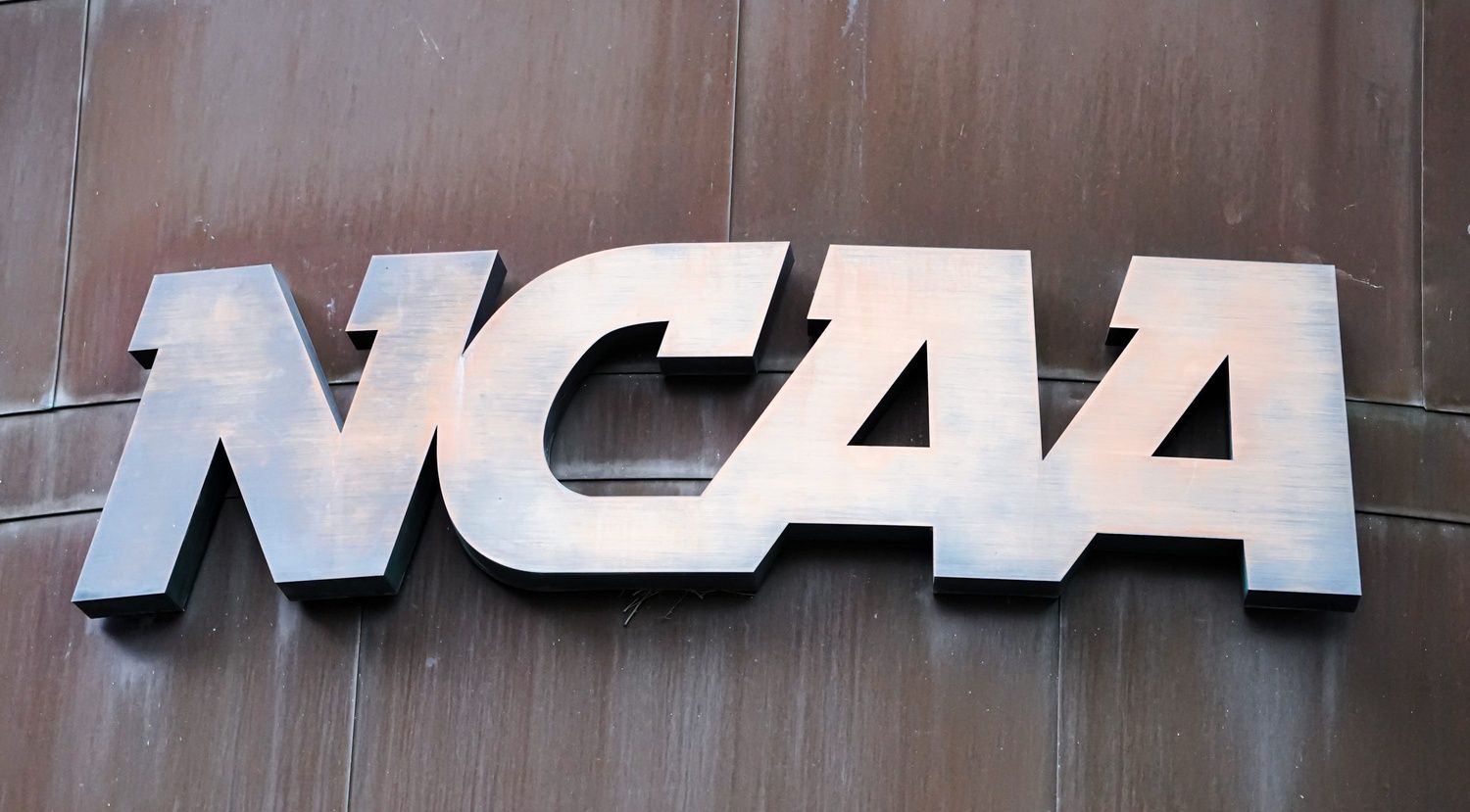
French basketball faces its greatest crisis as $2 million NIL deals lure away top prospects, prompting League president Philippe Ausseur to accuse American colleges of systematic “looting.” These high figures represent a significant increase over what French officials expected, creating chaos across the continent’s development system.
The financial devastation extends far beyond individual transfers, threatening to collapse the economic foundation that has sustained French basketball for decades. With NIL valuations now reaching millions, the gap between American and European offers has become insurmountable.
How NIL Deals Are Destroying French Basketball Development
The scale of financial disruption has caught French basketball completely off guard. Officials anticipated maximum contracts around €350,000 but are now facing offers that reach $2 million through NIL mechanisms. This represents the largest financial shock in European basketball history, dwarfing traditional transfer market dynamics.
French League sounds alarm over NCAA’s NIL raid on young players – https://t.co/pniXTGjuso https://t.co/mPszLX7Nnn
— Fran Fraschilla (@franfraschilla) June 18, 2025
Ilias Kamardine‘s move from Dijon to Ole Miss exemplifies how these deals are reshaping global basketball economics. The former FIBA U20 Eurobasket MVP abandoned a professional contract in France’s top division for what sources suggest could be a seven-figure NIL package in Mississippi.
The financial mathematics is brutal for European clubs. With Power Conference schools now operating $10 million roster budgets and individual players commanding $2-4 million valuations, French teams cannot compete.
This financial arms race has created what industry insiders describe as the “Wild West” of college athletics. At least eight NCAA programs will field $10 million-plus rosters next season, funded by collectives that operate with minimal oversight and maximum financial firepower.
Why French Players Are Choosing NCAA Over European Leagues
The NIL deals in America have triggered the systematic dismantling of France’s basketball infrastructure. Roman Domon’s departure to Murray State and Wilson Jacques’ exit represent just the beginning of what Ausseur calls an unprecedented talent hemorrhage that threatens the sport’s foundations.
The economic model sustaining French development is crumbling under NIL pressure.
As Ausseur warns, “If a player leaves, he brings us zero income. Everyone loses. Colleges get players at low cost, but if no one wants to do the developmental work anymore, the pool dries up”.
The long-term implications extend beyond immediate financial losses to threaten basketball’s future in France.
This financial incentive structure naturally pushes prospects toward NCAA programs, regardless of developmental considerations or career trajectory optimization.
The House settlement’s $2.8 billion backpay to former athletes signals even greater financial escalation ahead. With schools now authorized to directly compensate players up to $20.5 million annually, the competitive disparity between American universities and European professional clubs will only widen.
KEEP READING: John Calipari Reveals Transfer Portal and NIL Conditions Behind Eventual Retirement
Unlike NBA transfers requiring FIBA clearance, NCAA recruitment operates outside international oversight, leaving European clubs powerless to resist or seek compensation. This regulatory vacuum enables American programs to systematically strip talent from development systems that invested years nurturing these prospects.
NIL
How elite recruits, schools are approaching new revenue-sharing/NIL era
A new era of college athletics is upon us and starting soon. After the NCAA’s House settlement, which was passed on June 6, schools can now legally pay players. Power Four schools — including Auburn — are expected to have a $20.5 million cap to begin with, splitting up the money how it sees fit […]

A new era of college athletics is upon us and starting soon.
After the NCAA’s House settlement, which was passed on June 6, schools can now legally pay players. Power Four schools — including Auburn — are expected to have a $20.5 million cap to begin with, splitting up the money how it sees fit between various sports. It changes the game and creates more 0f an NFL-like structure for football programs, with a salary cap and having to determine what’s fair-market value for players at different positions.
Five-star wide receiver Cederian Morgan is one of the most coveted players in the country in the 2026 class, now navigating a new era of college athletics as the rules change in real time and will go into effect on July 1. He took his summer official visits and has one more trip remaining to Alabama next weekend. During his visit to Auburn last weekend he was able to talk revenue sharing, but things are still far from finalized and being able to throw out official numbers.
“I mean, they really can’t tell me for real. Because the new cap, the (revenue) sharing. They can’t give me a specific number because they’re still figuring out stuff and they don’t know,” Morgan said. “December, they’re going to be able to tell me a lot because they’re going to know a lot. But it was just like right now they know a little something about how the money is going to be spent. But they can’t just say how much.
“Most of (the other schools) told me the same thing. Because I know my first visit was Colorado. And I think when I was up there, they had just approved the cap. So June 1st, I think, that’s when it was. And then the next week, that was only the second week. So, like, just right now everybody is kind of on hold because they don’t really know a lot yet. But that’s what they’ve been telling me.”
NIL is still involved and a factor for recruits and players — but it’s changing. It’s turned into the wild west in recent years, with mega deals for players out of high school and players in the transfer portal.
NIL
John Mateer, Fernando Mendoza and other top transfers to watch in 2026 NFL Draft class
When we first started monitoring the transfer portal back in 2018, the first few classes were relatively thin on NFL Draft talent. That is definitely no longer the case. The days of transfers mainly being backups who didn’t play enough are long over, and college football’s portal is now firmly in its full-blown free-agency era, […]
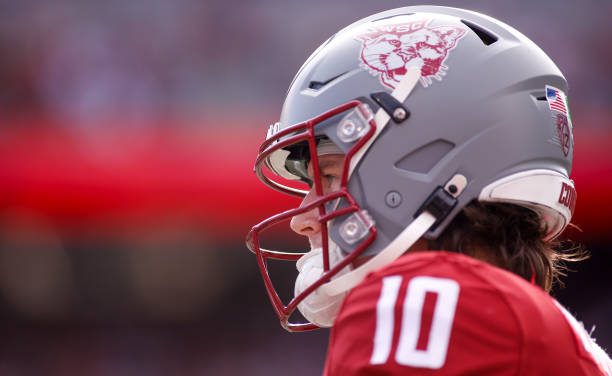


When we first started monitoring the transfer portal back in 2018, the first few classes were relatively thin on NFL Draft talent.
That is definitely no longer the case.
The days of transfers mainly being backups who didn’t play enough are long over, and college football’s portal is now firmly in its full-blown free-agency era, with quality starters at every position — including some with potential first-round draft grades — looking to better their situation (financially or otherwise).
Here’s a look at my favorite 2026 draft prospects from this offseason’s portal, by position.
Quarterback
1. Fernando Mendoza, Indiana (from Cal)
2. John Mateer, Oklahoma (from Washington State)
3. Carson Beck, Miami (from Georgia)
4. Nico Iamaleava, UCLA (from Tennessee)
5. Miller Moss, Louisville (from USC)
This year featured the deepest and most talented collection of available college quarterbacks since the transfer portal became a thing.
It’s a tough group to sort right now, but Mendoza is my pick as the top transfer QB. The 6-foot-5, 221-pounder not only comes with ideal size and above-average athleticism but also terrific arm talent. The fit between Mendoza and Indiana coach Curt Cignetti looks like a terrific one, and Mendoza has enough ability to land a first-round draft grade.
Mateer reminds me of recent No. 1 pick Cam Ward, who also transferred from Washington State. It wouldn’t be a shock to see a breakout year from the Sooners’ new quarterback.
I’ve already heard some hand-wringing from Miami fans about why draft analysts seem to be down on Beck, two years after thinking he would be a first-rounder. Beck’s 2023 season — Georgia’s last with Brock Bowers — was very good; his 2024 season was less so. Beck is more athletic than people think, plays with good size and throws an accurate ball without fear over the middle, but he has also shown poor aptitude against pressure and inconsistency on vertical shots, and he’s not as quick in the pocket as his testing numbers may indicate. This will be an important year for him.
Advertisement
Running back
1. Makhi Hughes, Oregon (from Tulane)
2. Jaydn Ott, Oklahoma (from Cal)
3. Justice Haynes, Michigan (from Alabama)
4. Rahsul Faison, South Carolina (from Utah State)
5. CJ Donaldson, Ohio State (from West Virginia)
Hughes will make the big jump to Oregon this year after rushing for nearly 3,000 yards and 22 touchdowns combined the last two seasons at Tulane. A durable, tough, quick-footed bell cow with good vision and a willingness to block, Hughes (5-11, 210 pounds) is expected to take over for Jordan James inside the Ducks’ high-powered offense, and he could provide similar value. He’s also a legit pass protector who isn’t afraid to step into a blitzing linebacker.
Ott was high on scouting boards last summer before an ankle injury derailed his season. The 6-0, 210-pounder runs with elite burst and balance, and he offers great vision and big-play potential in the pass game.
Haynes, a former top-40 recruit, has as much talent as anyone on this list — he just never got a shot to show it at Alabama, where he had double-digit carries in just one game the last two seasons. He’ll have to earn it at Michigan, too, as talented sophomore Jordan Marshall figures to be his top backfield mate.
Wide Receiver
1. Eric Singleton Jr., Auburn (from Georgia Tech)
2. Malachi Fields, Notre Dame (from Virginia)
3. KC Concepcion, Texas A&M (from N.C. State)
4. Zachariah Branch, Georgia (from USC)
5. Dane Key, Nebraska (from Kentucky)
There were a ton of high-end receivers in the portal, and this list also could have included Ole Miss’ De’Zhaun Stribling, Penn State’s Trebor Pena, Florida State’s Duce Robinson, LSU’s Barion Brown and several others.
Singleton, a Georgia state sprint champion in the 100, 200 and 400 meters, has a second-level burst and shows zero fear (at 5-11, 190) as a confident ball tracker.
The 6-4, 220-pound Fields — a former QB — is extremely intriguing as a big, explosive target with reliable hands and great potential after the catch. He had 13 contested catches last season at Virginia.
Concepcion, a 20-year-old junior, is a crafty slot receiver who was great after the catch and used heavily in the sweep game at NC State. It’s a similar conversation for Branch, now at Georgia. The 5-10, 180-pound former five-star prospect comes to Athens with truly elite speed and averaged more than eight yards after the catch last season.
Advertisement
Tight end
1. Max Klare, Ohio State (from Purdue)
2. Jack Endries, Texas (from Cal)
3. Tanner Koziol, Houston (from Ball State)
4. Luke Hasz, Ole Miss (from Arkansas)
5. Terrance Carter Jr., Texas Tech (from Louisiana)
Klare and Endries are similar prospects. Both stand around 6-4, 240 and are versatile, three-down tight ends with strong hands, toughness and real upside in the run game. Endries is arguably a better blocker at this point, but Klare may have more long-term athletic potential as a route runner and after the catch.
The former broke out as a sophomore last season with 56 catches for 623 yards; the latter (seen in the clip below) had 51 grabs for 685 yards and four TDs.
Koziol, a 6-7, 237-pound former wide receiver, was a production machine last year at Ball State, finishing with 93 catches for 840 yards and three scores. A terrific athlete with a ridiculous catch radius, he made an FBS-best 26 contested catches.
Offensive line
1. Isaiah World, OT, Oregon (from Nevada)
2. Monroe Mills, OT, Virginia (from Louisville)
3. Elijah Pritchett, OT, Nebraska (from Alabama)
4. Luke Petitbon, C, Florida State (from Wake Forest)
5. Joshua Braun, G, Kentucky (from Arkansas)
A hulking 6-8, 312-pounder, World heads to Oregon after three years spent starting at left tackle for Nevada. A gigantic player with the movement skills of a former basketball player, World came to college at around 270 pounds but bulked up and had his best year last season. He looks like a top-100 talent and has a chance to improve his stock while playing against better competition this year.
Mills, meanwhile, is one of the rare four-team college players — he has made stops at Oklahoma State, Texas Tech, Louisville and now Virginia, although he’s expected to miss the coming season because of an Achilles injury. We’ll see where the imposing 6-7, 320-pounder is at, health-wise, after the year.
Pritchett, a former top-40 recruit who started during his first year at Alabama last season, brings power and versatility to Nebraska’s front, albeit with the need to further prove himself on a big stage.
Edge
1. David Bailey, Texas Tech (from Stanford)
2. Patrick Payton, LSU (from Florida State)
3. Beau Atkinson, Ohio State (from North Carolina)
4. Romello Height, Texas Tech (from Georgia Tech)
5. Marvin Jones Jr., Oklahoma (from Florida State)
Bailey is a former top-40 recruit who plays with great speed, burst and length off the edge. He’s a bendy pass rusher who has no trouble dipping and turning the corner against larger tackles. One of Texas Tech’s many quality portal pulls, Bailey had a combined 22 1/2 sacks in three years at Stanford, mainly as a subpackage player.
Payton, meanwhile, had draft buzz entering the 2024 season after a breakout 2023. The 6-5, 255-pounder saw a production dip last year but has the potential to be a true three-down presence.
Atkinson (6-6, 265) is intriguing and put up 7 1/2 sacks and 25 pressures with 26 run stops last season, despite being a part-time rotational player. A long, rangy edge presence with power everywhere, Atkinson has put on nearly 30 pounds since high school.
Advertisement
Defensive tackle
1. Lee Hunter, Texas Tech (from UCF)
2. Bernard Gooden, LSU (from USF)
3. David Gusta, Kentucky (from Washington State)
4. Bear Alexander, Oregon (from USC)
5. Keeshawn Silver, USC (from Kentucky)
Hunter is a fridge on wheels. The 6-4, 325-pounder had dominant flashes inside during each of his past two seasons at UCF, making more than 50 tackles in 2023 alone and combining for 49 pressures during those two years. Big and powerful enough to eat space as a nose tackle, Hunter can make plays on the ball well outside his square in ways few 320-pounders can.
Gooden (6-1, 280) is undersized but can move and run like a linebacker — he’s athletic with great flexibility and burst. He played mainly as a three-tech last season at South Florida but also has spent a ton of time over the tackle as a heavy edge, despite his size.
From a pure talent standpoint, Alexander might have an argument for the top spot on this list. However, he has also shown little consistency during stops at Georgia and USC. If he can put it together, we’ll see his stock soar.
Linebacker
1. Amare Campbell, Penn State (from North Carolina)
2. Mohamed Toure, Miami (from Rutgers)
3. Kendal Daniels, Oklahoma (from Oklahoma State)
4. James Djonkam, Virginia Tech (from Eastern Michigan)
5. Nikhai Hill-Green, Alabama (from Colorado)
A rangy, explosive athlete who made 76 tackles (10 1/2 for loss) and 6 1/2 sacks last season, Campbell should be able to immediately step into a starting role for Jim Knowles at Penn State. Fast enough to run with tight ends in the slot and twitchy enough to beat offensive linemen at the point of attack, Campbell is a great blitzer and boasts big-time potential as a junior.
Toure missed all of last season with an ACL injury (the second of his college career) but still served as Rutgers’ team captain after an outstanding 93-tackle, 4 1/2-sack 2023 season. If he can stay healthy, he’ll be a great addition for Miami — and give scouts a chance to re-evaluate where he’s at as a prospect.
Secondary
1. Dillon Thieneman, S, Oregon (from Purdue)
2. Mansoor Delane, CB, LSU (from Virginia Tech)
3. Josh Moten, CB, Southern Miss (from Marshall)
4. DJ Harvey, USC (from San Jose State)
5. Tacario Davis, CB, Washington (from Arizona)
One of the country’s best players on a bad team each of the last two seasons, Thieneman (a true junior) was Big Ten Freshman of the Year in 2023, with six interceptions and eight forced incompletions. He followed that up with eight forced incompletions and six pass breakups last season. A do-it-all safety, he can play deep, in the box or in the slot and doesn’t miss many tackles.
One of the best players in the country, Thieneman will have top-30 buzz entering the 2025 season.
One half of a great Virginia Tech duo, alongside Dorian Strong, Delane had a career-best four interceptions and 51 tackles last season — and probably would’ve been drafted had he declared. He didn’t quite have the year many anticipated he would in 2024 (he was Dane Brugler’s No. 5 corner last summer), but he still has the size (6-1, 190) and potential to be a truly consistent corner in man or zone.
(Top photo of John Mateer: Alika Jenner / Getty Images)
NIL
Tennessee Governor Signs Bill Expanding Student
On May 1, 2025, Governor Bill Lee signed into law legislation (SB 536/HB194) that expands Tennessee’s Intercollegiate Athlete’s Name, Image, or Likeness Law (“student-athlete NIL statute”). Under the law, Tennessee student-athletes will have no limits on NIL compensation unless the limitations are expressly prohibited or limited by federal law, a valid court order, or determined to be […]
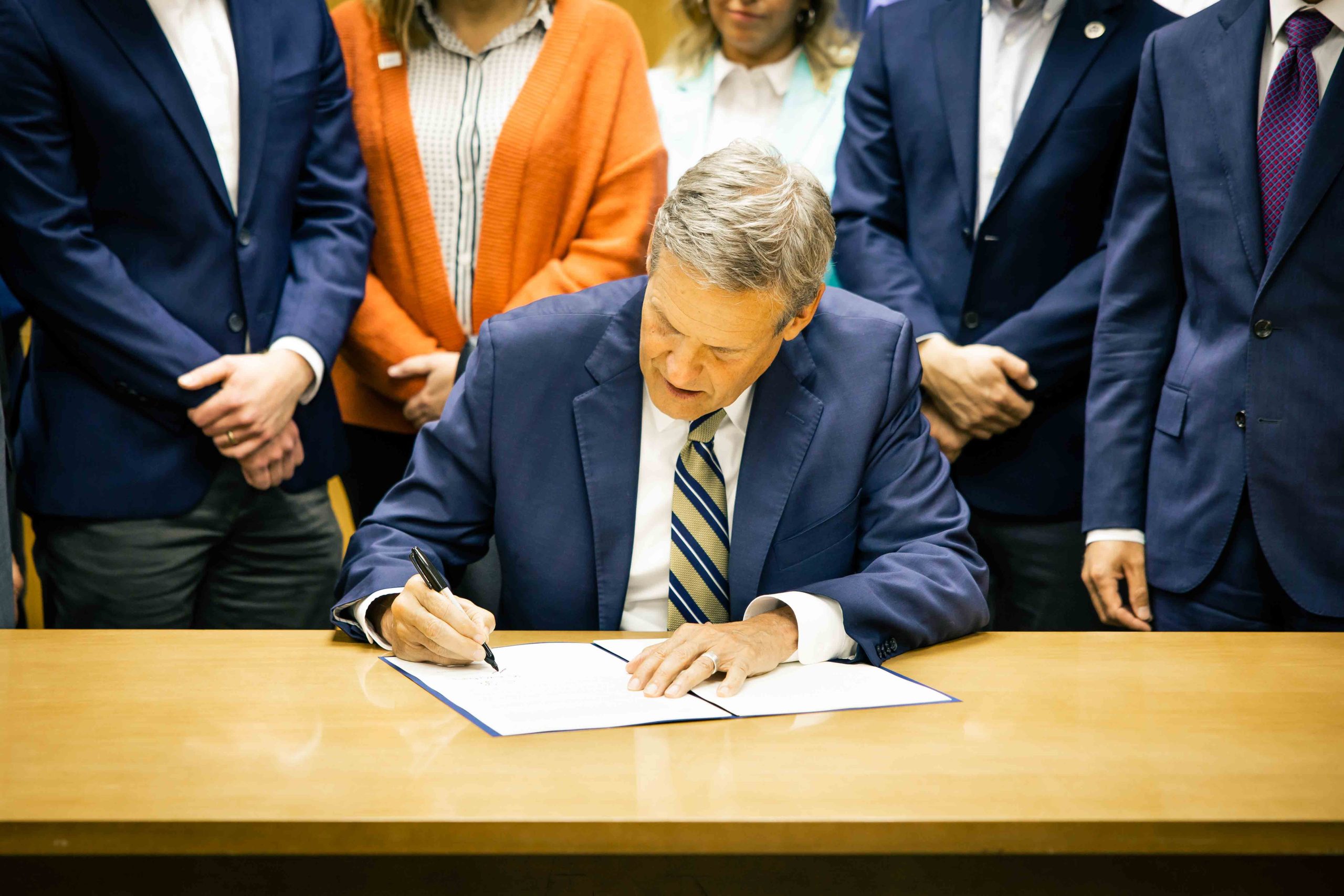

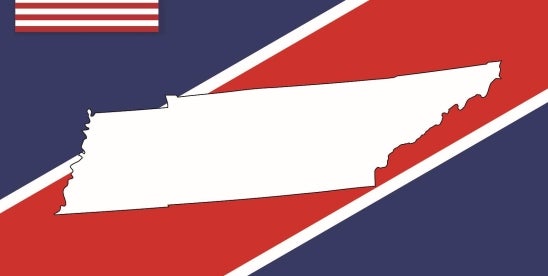
On May 1, 2025, Governor Bill Lee signed into law legislation (SB 536/HB194) that expands Tennessee’s Intercollegiate Athlete’s Name, Image, or Likeness Law (“student-athlete NIL statute”). Under the law, Tennessee student-athletes will have no limits on NIL compensation unless the limitations are expressly prohibited or limited by federal law, a valid court order, or determined to be exempt from antitrust law.
Quick Hits
- Tennessee amended its student-athlete NIL statute to allow unlimited NIL compensation for Tennessee student-athletes, unless prohibited by federal law, a valid court order, or determined to be exempt from antitrust law.
- The student-athlete NIL statute may conflict with the recent NIL compensation restrictions detailed in the approved House v. NCAA settlement.
- The amendments shield Tennessee universities from NCAA sanctions related to player pay and shift liability to the NCAA for any legal repercussions arising from student-athletes related to their pay.
Tennessee’s Student-Athlete NIL Law
In 2022, Tennessee adopted its student-athlete NIL statute, which prohibited institutions or their agents from being involved in actions that compensate student-athletes for their NIL. This included prohibiting institutions from facilitating NIL deals by working with third parties (often termed “collectives”). The law was later amended to state that an institution and its agents can be involved in NIL compensation as long as they do not coerce, compel, or interfere with the student-athlete’s decision to earn compensation.
The amendments that Governor Lee recently signed expand this law to allow unlimited NIL compensation for Tennessee student-athletes unless such limits are expressly prohibited or limited by federal law, a valid court order, or determined to be exempt from antitrust law. Tennessee institutions do not have to follow any National Collegiate Athletic Association (NCAA) rules that lessen, or tend to lessen, full and free competition in trade or commerce affecting the state of Tennessee. The recent amendments also shield Tennessee institutions and collectives from liability related to NIL compensation by shifting liability to the NCAA if the NCAA rules are deemed unlawful and by stating that the NCAA will hold the state, its institutions, and intercollegiate athletes harmless from any damages related to NIL compensation.
The Amendments’ Implications, Considering the House v. NCAA Settlement
On Friday, June 6, 2025, the U.S. District Court for the Northern District of California approved the House v. National Collegiate Athletic Association settlement that pays nearly $2.8 billion in back pay to former athletes over the next ten years. This historic settlement also establishes a revenue-sharing framework that provides a permissive cap of around $20 million for institutions to use to cover all athlete NIL compensation across varsity sports. The revenue-sharing cap is not limited to sports that generate revenue for the institution. Further, collectives that were paying NIL directly to student-athletes have other restrictions and limitations under the settlement. Particularly, NIL deals over $600 will undergo a “market value” analysis to ensure they are in direct relation to what an individual player brings to the team.
The amendments to Tennessee’s student-athlete NIL statute leave several unanswered questions in light of the approved House v. NCAA settlement. There is an open question related to whether the House v. NCAA court’s “Order Regarding Order Granting Motion for Final Approval of Settlement Agreement” would constitute a valid court order expressly limiting NIL compensation under Tennessee’s student-athlete statute. In the event it does not, Tennessee institutions and collectives may choose not to adhere to the House v. NCAA settlement’s NIL compensation restrictions under Tennessee’s Student-Athlete NIL statute.
Key Takeaways
Pursuant to Tennessee’s amended student-athlete NIL statute, Tennessee institutions and collectives are allowed to pay unlimited NIL compensation to Tennessee student-athletes. In theory, if Tennessee institutions and collectives do not comply with the House v. NCAA settlement’s restrictions on NIL compensation, they risk sanctions from the NCAA. While there is a risk of sanctions from the NCAA, under the amended student-athlete statute, Tennessee institutions and collectives may be shielded from any liability from lawsuits related to NIL compensation, and any such liability will be shifted to the NCAA.
NIL
Colorado Buffaloes Basketball Schedule Update: Australian National Team Matchup
Coach Tad Boyle’s Colorado Buffaloes get a treat this July — the chance to face one of the world’s most accomplished international teams. Colorado men’s basketball will square off against the Australian Boomers, Australia’s national team, on July 31 in an exhibition as part of their foreign tour. The game will take place at the […]
Coach Tad Boyle’s Colorado Buffaloes get a treat this July — the chance to face one of the world’s most accomplished international teams.
Colorado men’s basketball will square off against the Australian Boomers, Australia’s national team, on July 31 in an exhibition as part of their foreign tour. The game will take place at the Gold Coast Sports & Leisure Centre.
Every four years, the NCAA allows a program to head overseas for scrimmages. Boyle’s group will venture Down Under from July 23 to Aug. 5, with three other exhibition opponents to be revealed.
It will be a fascinating test for both sides, as the Buffs recover from a dismal 2024-25 season with seven new players, and Australia prepares for the FIBA Asia Cup in Saudi Arabia one week later.
“The one thing about Australian basketball is that there’s a lot of pride,” Boyle said in a release. “There are a lot of good players who have come to the United States to play college basketball, who are in the NBA from that country, and the Boomers are their team. And one thing I’ve learned, not only about international basketball competition but specifically about Australia, is that there’s a lot of national pride. And so, when you put on that Boomers uniform as an Australian, it means something, and those guys play like it means something to them.
“So it’ll be a heck of a challenge for us, heck of an opportunity for us to get better. You want to play against the best, so we’re trying to do that. We are really fortunate and happy to have this opportunity.”
MORE: Carolina Panthers’ Jimmy Horn Jr. Fined By Coach During Mic’d Up Debut
MORE: Colorado Buffaloes Recruiting: Deion Sanders Lands Commitment From Multi-Talented Georgia Athlete
MORE: Cleveland Browns GM Andrew Berry Addresses Quarterback Trade: Shedeur Sanders Roster Spot?
Nate Tomlinson, who rejoined the Buffs’ coaching staff last week, is a native of Sydney and an alum of the Australian national program. He competed at the 2009 World University Games and the 2007 U19 World Championships. In 2012, after leading Colorado to its first NCAA Tournament in nine years as a player, Tomlinson played six seasons for Melbourne United of the NBL.
Currently, two Australians grace the women’s basketball roster. Forwards Tabitha Betson and Jade Crook had extensive experience in international play before coach JR Payne brought them to Boulder in 2024 and 2025, respectively.
Notable NBA names currently rostered for Australia include a swathe of talented guards.
Dyson Daniels won the league’s Most Improved Player award and was First-Team All-Defense this past season. Josh Giddey, Patty Mills, Dante Exum, Josh Green and Matthew Dellavedova all guided the Boomers at the 2024 Paris Olympics. Veteran forward Joe Ingles and centers Jock Landale and Duop Reath also play both in the NBA and for Australia.
It was a disappointing sixth-place finish for the Aussies in Paris, but the unit still earned a bronze medal in 2021’s Tokyo Games. While most of its NBA talents may not compete against Colorado, it will still be a valuable contest for its many young, exciting members.
“A high-level NCAA program like Colorado will undoubtedly present a valuable challenge and an important early benchmark for us as we prepare for the Asia Cup,” said Boomers coach Adam Caporn, an assistant for the St. Mary’s Gaels from 2010-2014. “Having previously worked in college basketball, I’ve seen a lot of strong Colorado teams under Coach Boyle. His teams are consistently disciplined on the defensive end and always ready to compete. We’re grateful to CU for contributing to our preparation, and we look forward to having them on the Gold Coast in July.”
As for the Buffs, it will be fans’ first chance to see stellar newcomers like Barrington Hargress and promising returners like Sebastian Rancik and Bangot Dak in action. After a year to forget, Colorado may have a trip worth remembering this summer.
-

 High School Sports2 weeks ago
High School Sports2 weeks agoParents Speak Out As Trans Pitcher Throws Shutout In MN State Quarterfinals
-

 College Sports3 weeks ago
College Sports3 weeks agoIU basketball recruiting
-

 Professional Sports2 weeks ago
Professional Sports2 weeks ago'I asked Anderson privately'… UFC legend retells secret sparring session between Jon Jones …
-

 Health2 weeks ago
Health2 weeks agoOregon track star wages legal battle against trans athlete policy after medal ceremony protest
-

 Professional Sports2 weeks ago
Professional Sports2 weeks agoUFC 316 star storms out of Media Day when asked about bitter feud with Rampage Jackson
-

 High School Sports3 weeks ago
High School Sports3 weeks agoThe Arizona Daily Star's top high school athletes, coaches and moments of the 2024
-

 Rec Sports2 weeks ago
Rec Sports2 weeks ago2x NBA All-Star Reacts to Viral LeBron James Statement
-

 Motorsports2 weeks ago
Motorsports2 weeks agoCorey LaJoie to make nine NASCAR Truck Series starts with Spire Motorsports
-

 Social Media2 weeks ago
Social Media2 weeks agoControversial Athletics Gender Dispute Goes Viral After Riley Gaines Lashes Over Authorities
-

 NIL2 weeks ago
NIL2 weeks agoMen's college basketball Top 25 reset































